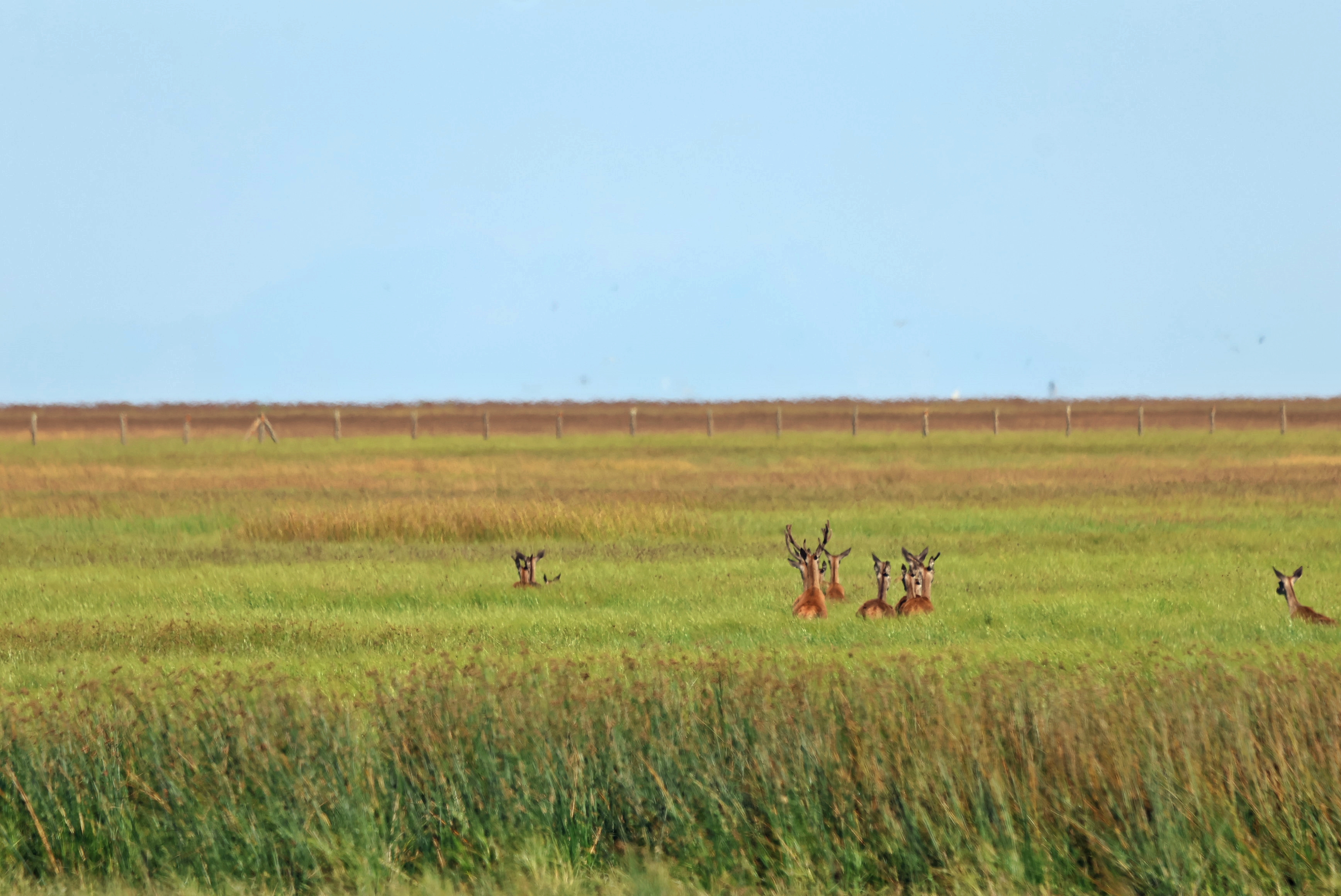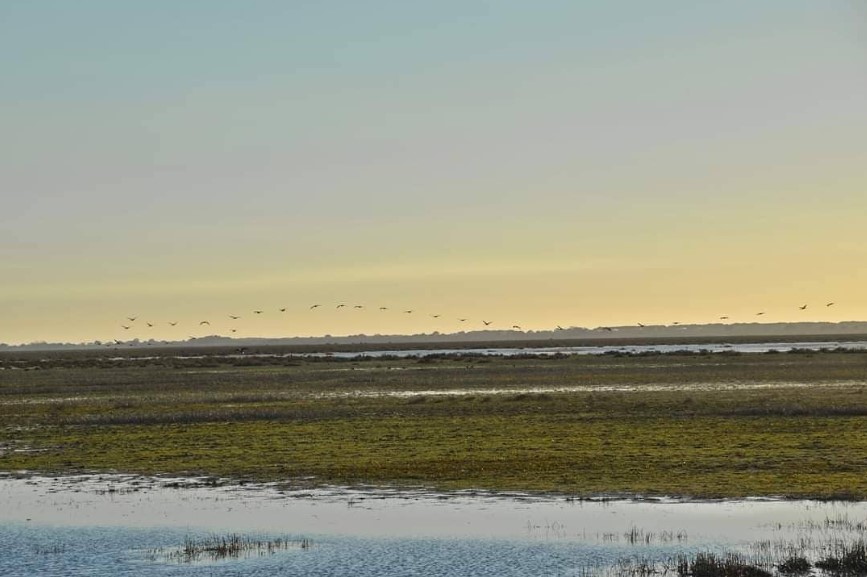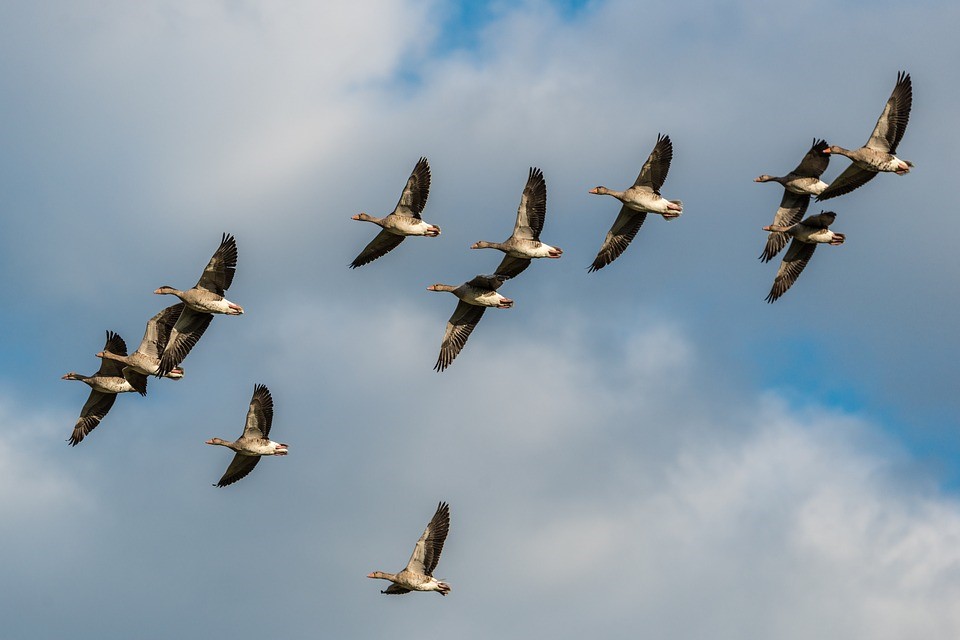Otoño en Doñana: el renacer
Ya se siente el otoño en Doñana. Las primeras lluvias refrescan el aire y devuelven la humedad a una tierra que durante meses permaneció seca. La naturaleza reacciona de inmediato: todo se transforma.
En los bosques resuena un sonido inconfundible. Es la berrea. Los ciervos machos braman con fuerza para atraer a las hembras y marcar su territorio. Este ritual, que anuncia el celo, llena de energía los pinares y las llanuras del parque. Escucharlo al amanecer o al atardecer es una de las experiencias más sobrecogedoras del otoño en Doñana.

Ciervos por la marisma, otoño en Doñana.
El cielo también cambia. Miles de aves migratorias cruzan el parque en uno de los grandes viajes naturales del planeta. Mientras especies estivales como golondrinas, abejarucos o cigüeñas blancas parten hacia África, otras procedentes del norte de Europa llegan para pasar el invierno. Ánsares, grullas y limícolas encuentran refugio en las marismas que comienzan a llenarse con las primeras lluvias. Cada año, este intercambio marca el ritmo vital del humedal y convierte a Doñana en un punto de encuentro entre continentes.

Grullas en vuelo, otoño en Doñana.
Otoño es esperanza
El agua, tras un largo verano, vuelve a despertar la vida. Los pastos reverdecen, los hongos brotan y los pinares recuperan su color. La respuesta del ecosistema es inmediata: todo parece volver a respirar.
En el litoral, el cambio también se hace visible, aunque de forma más discreta. Las arenas se compactan, los arroyos vuelven a fluir y las dunas dibujan una pendiente más suave. Este proceso, produce durante los temporales a pie de playa escalones, mini escarpes o acantilados por los cambios de mareas, y demuestra que incluso en los lugares más tranquilos, el otoño también deja su huella.

Dinámica litoral, otoño en Doñana.
Así, el otoño en Doñana se vive con los sentidos: el eco de los ciervos, el vuelo de las aves y el rumor del agua que anuncian que la vida vuelve a latir con fuerza.
Escucha este breve audio-relato y descubre cómo el otoño transforma Doñana: la marisma revive, las aves regresan y el bosque se llena de sonidos y vida.
🎧 Dale al play y déjate llevar por la naturaleza.
